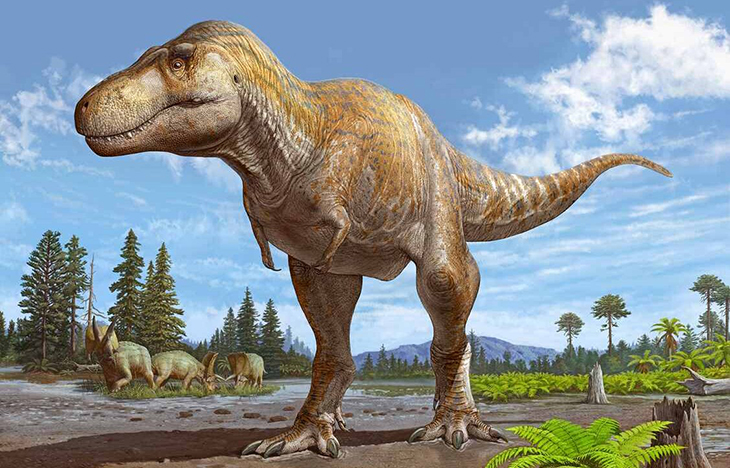
In a groundbreaking discovery, paleontologist Sebastian Dalman and his team have unveiled a newfound giant dinosaur species, potentially the closest relative of the iconic Tyrannosaurus rex, shedding new light on the evolutionary journey of this legendary genus.
The findings, published in the journal Scientific Reports, introduce Tyrannosaurus mcraensis, a formidable carnivore that roamed North American approximately five million years prior to the reign of the T. rex.
The distinctiveness of Tyrannosaurus mcraensis emerged through meticulous analysis of fossilized skull fragments unearthed from the Hall Lake Formation in New Mexico. Initially misattributed to T. rex, these remains exhibit subtle yet significant differences in the shape and articulation of skull bones, leading researchers to designate them as belonging to a distinct species.
Initially attributed to T. rex and similar in size to its 30-foot-longbody, the remains have been reclassified by the research team as belonging to a new species. This reclassification is based on the identification of numerous “subtle” differences in the shape and connections between the skull bones of the specimen and those of T. rex.
By examining the geological context of the fossil discoveries and their proximity to other dinosaur specimens, scientists estimate that T. mcraensis inhabited North America’s ancient landscape approximately 71 to 73 million years ago, preceding its renowned counterpart by a span of five to seven million years.
Dalman, a doctoral student at the New Mexico Museum of Natural History, said, “Analysis of the relationships between T. mcraeensis and other theropod dinosaur species indicates that it may have been… the closest known relative of T. rex.”
Moreover, the presence of giant-bodied herbivores coexisting alongside Tyrannosaurus mcraensis suggests a pivotal moment in the evolution of Tyrannosaurids, potentially marking the initial experimentation with massive body sizes within the genus. This evolutionary milestone unfolded within Laramidia, an island continent spanning from modern-day Alaska to Mexico, which thrived between 100 and 66 million years ago as a hotbed of prehistoric biodiversity.
“Tyrannosaurini may have evolved a giant body size by approximately 72 million years ago, alongside other giant dinosaurs from southern Laramidia such as ceratopsians, hadrosaurs, and titanosaurs,” said Mr. Dalman.
In addition to reshapaing our understanding of Tyrannosaurid evolution, the discovery of Tyrannosaurus mcraensis may provide definitive answers to long-standing debates regarding the origins of T. rex. While competing hypotheses once positioned an Asian origin for the tyrant lizard king, mounting evidence now points to Western North America as its likely birthplace, solidifying its status as an iconic product of the region’s ancient landscapes.
What are your thoughts? Please comment below and share this news!
True Activist / Report a typo


